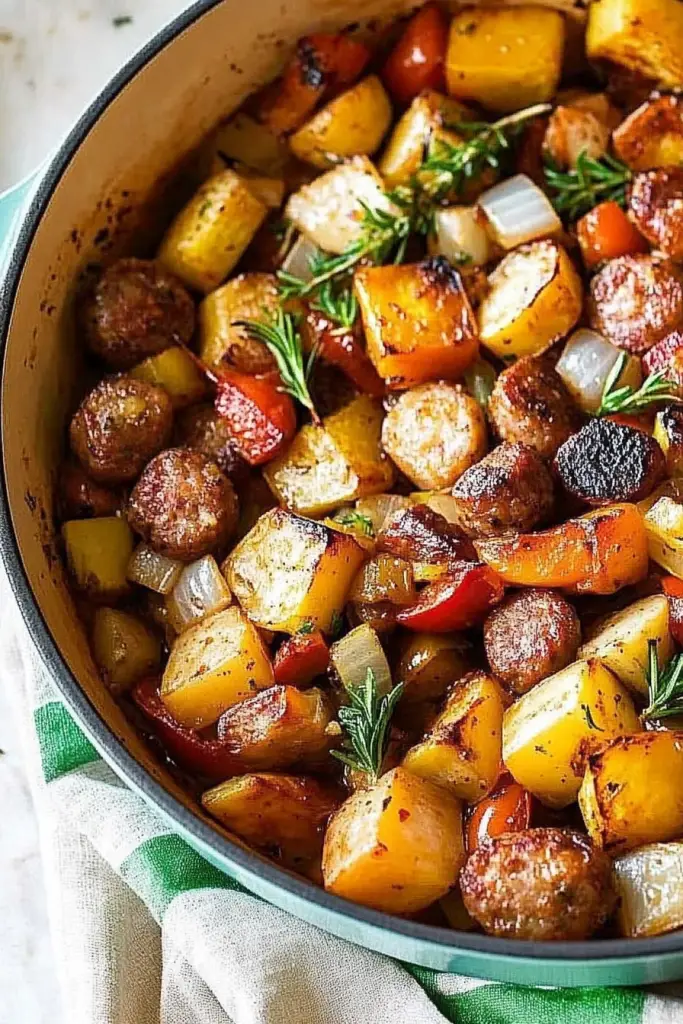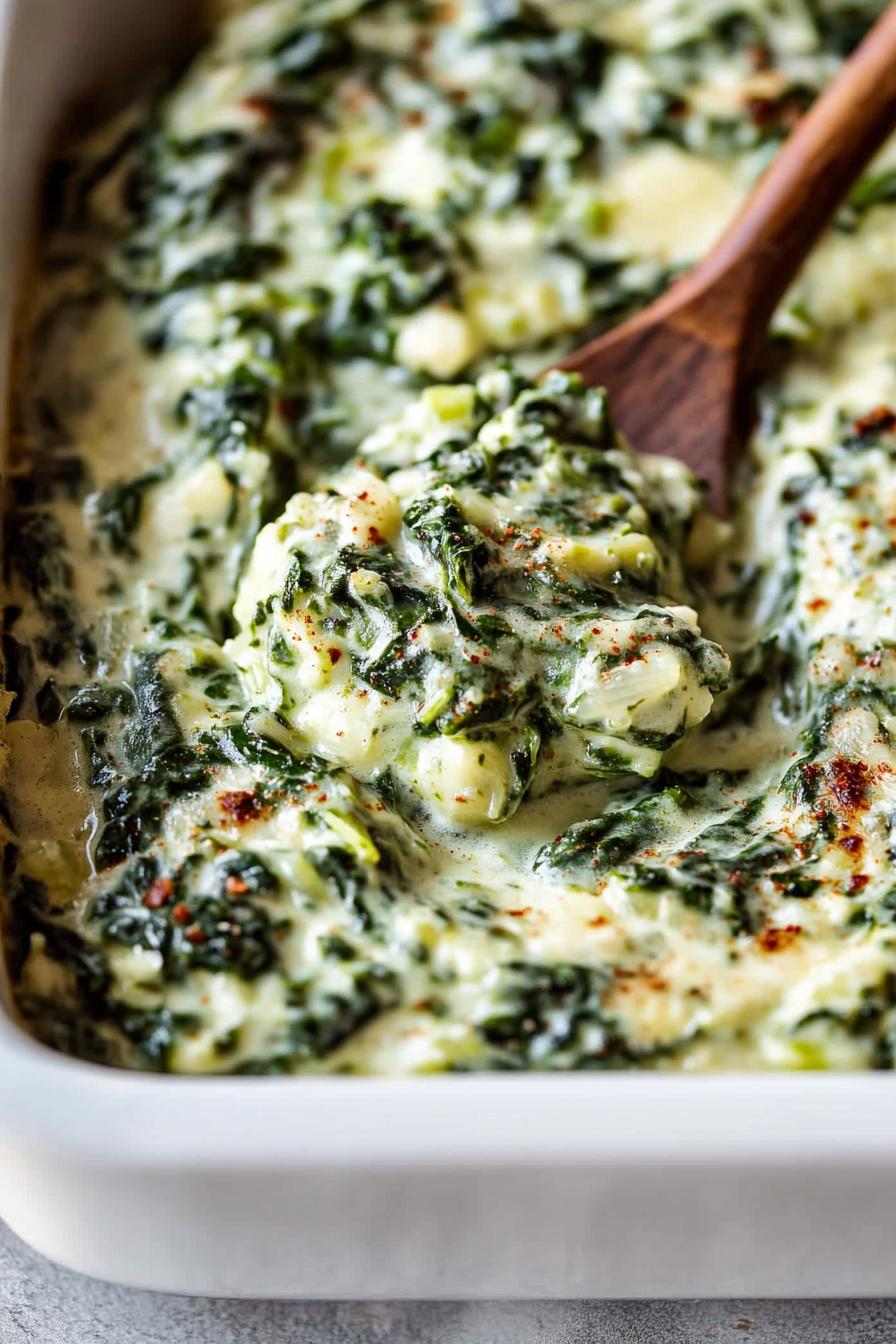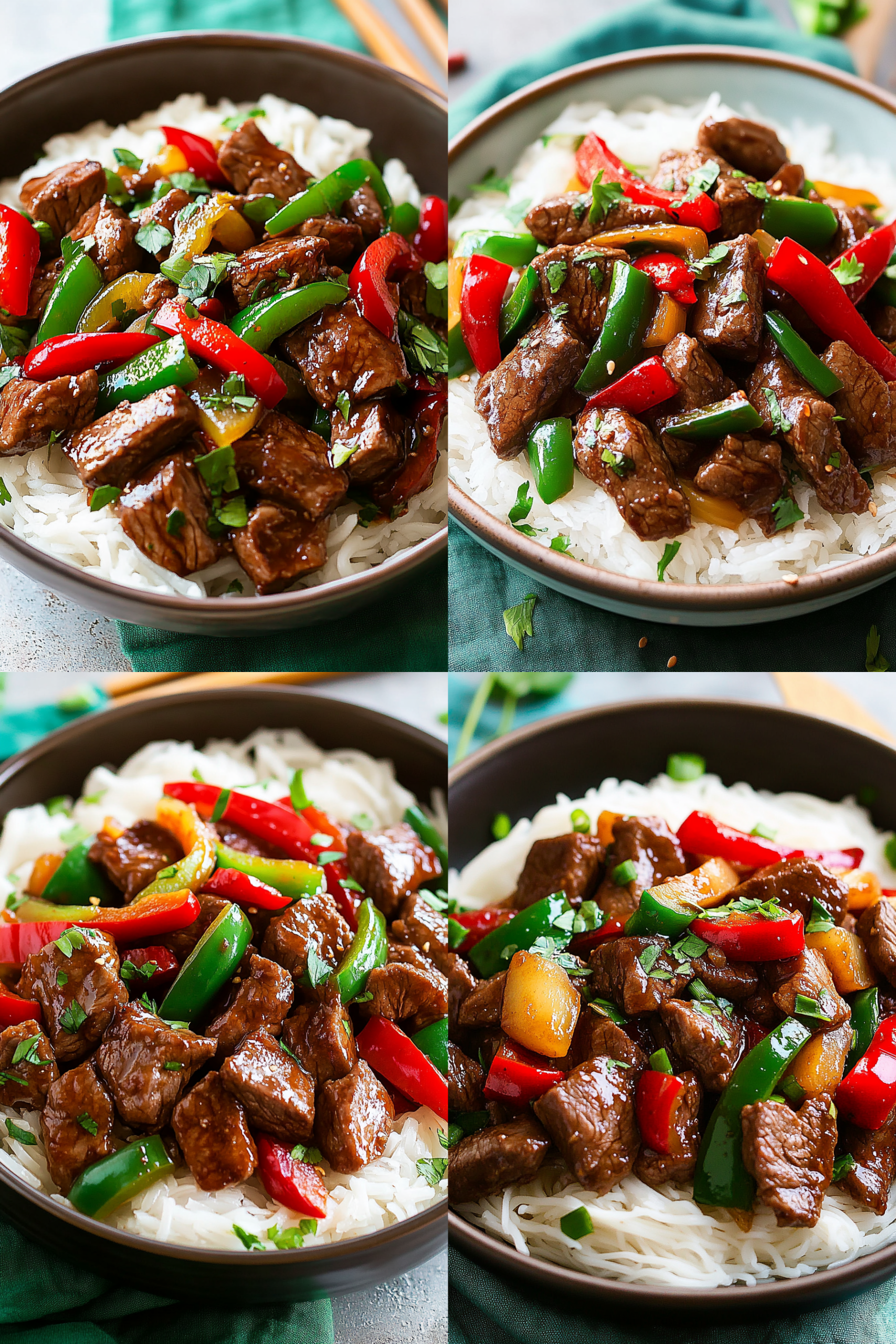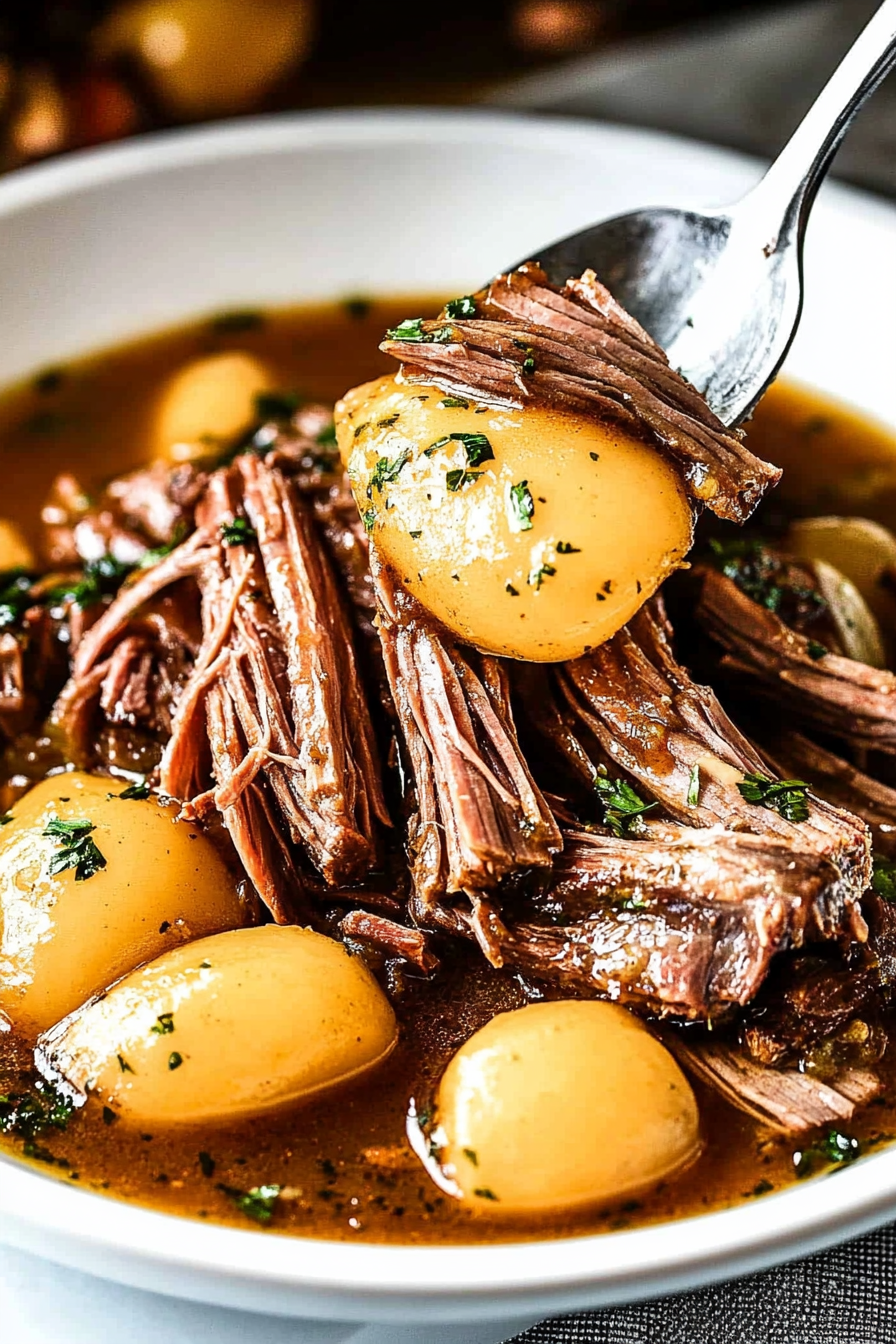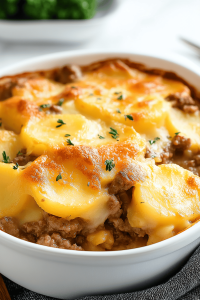I still remember the first time my grandmother taught me to sauté summer vegetables with sausage. The kitchen smelled like sunshine—garlic, olive oil, and those bright green zucchini that seemed to glow on the cutting board. This is the kind of dish that tastes like a long hug after a busy week: simple, hearty, and somehow more vibrant than it has any right to be. I call it a summer vegetables sausage skillet, and it’s become my go-to when my garden is overflowing and I want a one-pan supper that feels festive but isn’t fussy. If you’ve ever compared a weekday sausage skillet to a veggie-packed paella or shakshuka, you know what I mean—the same cozy comfort, but with a clean, sunny twist. The first bite always reminds me of sunny porch nights and family laughter, and I think you’ll feel that warmth too the moment the skillet hits the table. This one’s a lifesaver on busy nights, and my kids actually ask for seconds more often than I’d admit. Let’s gather our vegetables, a couple of sausages, and a skillet that’s ready to sing with color and aroma.
What is a Summer Vegetables Sausage Skillet?
Think of this as a bright, one-pan supper that marries savory sausage with the best of summer produce. It’s essentially sausage crumbled and browned, then swirled with a rainbow of vegetables—zucchini, squash, peppers, tomatoes, and onions—quickly caramelized and lightly sauced to create a cohesive, flavorful dish. The name says it all: you’re highlighting summer vegetables in every bite, letting their natural sweetness shine while the sausage brings depth and a comforting savoriness. It’s the kind of dish that feels “restaurant-worthy” without requiring a lot of fuss, special ingredients, or technique. Think of it as the food equivalent of a joyous backyard gathering—colorful, crowd-pleasing, and surprisingly adaptable to whatever you’ve got lurking in the crisper. I love how the skillet does most of the heavy lifting, so you’re free to mingle with family while dinner comes together.
Why you’ll love this recipe?
What I love most about this summer vegetables sausage skillet is how forgiving and flexible it is. It’s a dish that adapts to what’s in season and what you happen to grab at the market, and it still feels cohesive and polished.
• Flavor: The sausage renders its fat, infusing the pan with a savory, slightly fennel-y note, while the vegetables release their own sweetness as they blister and caramelize. A splash of lemon or a hammy drizzle of balsamic adds brightness that makes everything pop. The contrast between the hearty sausage and tender-crisp veg is addictive, and the aroma alone can turn any weeknight into something worth celebrating.
• Simplicity:What is a one pan affair? You brown the sausage, scoop it out, sauté the veg in the same pan, rejoin the meat
• Cost-efficiency: What is the best way to measure cost-efficiency? Sausage is often an affordable protein option, and using summer vegetables—like zucchini, peppers, tomatoes, and onions—keeps the price down while packing color and nutrition into every bite. It’s the kind of meal you can stretch by adding a grain or keeping it as-is for a lighter dinner.
• Versatility: The dish shines as a weeknight main, a weekend lunch, or a handsome dinner when you’re feeding a crowd. Swap peppers for eggplant or throw in cherry tomatoes for a burst of sweetness. Serve with crusty bread, polenta, or a bed of fluffy rice, and you’ve got a framework that’ll serve you through countless summer nights. These are the reasons I keep this skillet close to the stove all season long. And yes, it’s gluten-friendly if you use gluten-free sausage and double-check any additions.
How to Make Summer Vegetables Sausage Skillet
Quick Overview
This is a straightforward, high-flavor weeknight hero. You’ll brown sausage in a wide skillet to render fat and develop a nice depth of flavor, then add chopped summer vegetables to blister and soften just enough. A quick hit of aromatics, a splash of broth or wine, and a squeeze of lemon bring everything together, while fresh herbs finish the dish with brightness. The method is forgiving—oven-ripened veggies, a little time on the stove, and you’re tasting sunshine in a pan. The beauty is you can customize the produce to your liking, so it never feels like the same meal twice. Don’t worry if you don’t have every veggie on the list—this dish thrives on flexibility, and that’s part of the charm of a skillet dinner like this.
Ingredients
For the Main Ingredients:
– 1 lb Italian sausage (sweet or hot) or sausage of your choice, casings removed if needed
– 3 cups total of bright summer vegetables (example: 2 cups zucchini, 1 cup yellow squash, 1 cup bell peppers), chopped into bite-sized pieces
– 1 medium red onion, sliced or chopped
– 3 cloves garlic, minced
– 1 tablespoon olive oil, plus a little extra for finishing if needed
– Salt and freshly ground black pepper, to taste
For the Aromatics & Brighteners:
– 1/4 cup dry white wine or chicken broth (optional but lovely for deglazing)
– 1–2 teaspoons lemon juice, to brighten at the end
– Optional: 1 teaspoon Dijon mustard or a pinch of red pepper flakes for warmth
For the Garnish & Serving Options:
– Fresh herbs (parsley, basil, or oregano), chopped
– Grated parmesan or a dollop of ricotta (optional but delightful)
– Crusty bread, polenta, or rice for serving
Optional Pantry Additions:
– Cherry tomatoes for a pop of sweetness
– A handful of olives for a briny kick
– A splash of balsamic or a pinch of dried oregano for extra depth
Step-by-Step Instructions
Step 1: Preheat & Prep Pan
Place a large, sturdy skillet over medium-high heat. If you’re using a nonstick pan, a light brush of olive oil helps the sausage brown evenly. Let the pan get nice and hot before you add the sausage. This is the moment when your kitchen starts smelling like a happy summer afternoon—there’s just something about sizzling sausage that invites everyone to the stove. While the pan heats, crumble or cut the sausage into bite-sized pieces so you’ve got a good sear on every piece.
Step 2: Brown the Sausage
Add the sausage to the pan in a single layer and let it sear without moving for about 2–3 minutes, then flip and cook until evenly browned and cooked through. If the sausage is release-heavy, tilt the pan and spoon out some fat—it keeps things from getting greasy and helps the veggies brown better later. When the sausage is done, transfer it to a plate and set aside. You’ll use that same pan—one pan, fewer dishes, happiness achieved.
Step 3: Sauté the Aromatics
In the same pan, add a tablespoon of olive oil if you need it. Toss in the minced garlic and sliced red onion, and sauté until the onion turns translucent and the garlic is fragrant but not burnt. That sweet onion sweetness and garlic punch are what carry the dish from “good dinner” to “worth a lingering sniff at the stove.” If you like heat, now’s the moment to sprinkle in a pinch of red pepper flakes.
Step 4: Add the Vegetables
Stir in the chopped summer vegetables. Let them cook, stirring occasionally, until they start to blister and soften—about 5–7 minutes. You’re aiming for veg that retain a touch of bite and a lot of color. If your peppers seem dry, splash in a little wine or broth to loosen any fond from the bottom of the pan and lift all that caramelized goodness.
Step 5: Rejoin Sausage & Deglaze
Return the browned sausage to the pan with the vegetables. If you’re using wine or broth, pour it in now and scrape the bottom of the pan to lift any browned bits—that’s where the flavor lives. Let it simmer for 2–3 minutes so the flavors meld and the liquid reduces slightly to a light sauce.
Step 6: Finish with Brightness & Herbs
Season with salt and pepper to taste. A squeeze of lemon juice brightens all those flavors, while herbs add a fresh, fragrant finish. If you like a touch of tang, a small amount of Dijon mustard whisked in off the heat is surprisingly lovely. Taste, adjust, and when you’re happy, turn off the heat and let the skillet rest for a moment so the flavors settle together.
Step 7: Plate with Texture
Scatter chopped fresh herbs over the top. If you’re serving with bread or polenta, this is the moment to warm those, or you can spoon the sausage and vegetables over a bed of rice for a heartier plate. The contrast between the crisp edges of the veg and the tender interiors is where the magic lives—colorful, inviting, and totally comforting.
Step 8: Optional Finishing Glaze
If you want a glossy finish, whisk a teaspoon of extra-virgin olive oil with a tiny splash of lemon juice and drizzle it lightly over the dish just before serving. It adds a sheen and a little extra zing without overpowering the natural flavors. This step is purely optional, but I love the subtle lift it gives the dish.
Step 9: Slice & Serve
Serve hot, with a crusty loaf, polenta, or a simple bed of fluffy rice. The beauty is in the color and aroma—green zucchini, red onion, golden-brown sausage, and a bright kiss of lemon. My kids call this “the sunshine skillet,” and they’re right about the mood it brings to the table. If you’ve got leftover sausage and veg, it reheats beautifully—just reheat gently so nothing dries out.
What to Serve It With
This skillet wants to be friends with simple sides that don’t steal the show from the sausage and veg. Here are a few tried-and-true pairings that fit different occasions.
For Breakfast: Reheat the skillet and spoon over a couple of fried or poached eggs. A dash of hot sauce, some chopped parsley, and a crusty slice of bread makes a breakfast worth waking up for. My family loves dipping the crusty bread into the juices; it’s like a savory, late-summer morning treat.
For Brunch: Serve alongside a light arugula salad with lemon vinaigrette and toasted sourdough. The peppery greens balance the richness of the sausage while keeping things bright and fresh for midday entertaining.
As Dinner: Plate with creamy polenta or a bed of fluffy couscous or rice. If you’re going gluten-free, pair with quinoa or cauliflower rice for a bit of texture and a wholesome boost.
For Cozy Snacks: Use leftovers as a topping for baked potatoes or a hearty flatbread. A sprinkle of feta or goat cheese on top makes it feel like a mini, informal feast.
Family traditions slide right into this recipe, too. Some nights we fold in a handful of cherry tomatoes right at the end for a burst of sweetness; other nights we finish with a swirl of balsamic to deepen the glaze-like coating on the veg. The result is always the same: a vibrant, satisfying skillet that brings people to the table with smiles—proof that simple ingredients, treated well, can be incredibly comforting.
Top Tips for Perfecting Your Summer Vegetables Sausage Skillet
Little tweaks go a long way with a dish like this. Here are the tricks I’ve learned from countless nights in the kitchen.
Zucchini Prep: Zucchini loves moisture, so salt it lightly after slicing and pat dry to remove excess water. This keeps the dish from getting soggy and helps the zucchini brown in the pan instead of steaming.
Mixing Advice: Don’t overcrowd the pan—give everything space to brown. If you crowd, the vegetables will steam rather than blister, and you’ll lose that lovely caramelization.
Swirl Customization: The citrus finish is your friend. A quick splash of lemon juice at the end brightens the dish beautifully. If you’re not into citrus, a teaspoon of white wine vinegar or a tiny touch of honey can balance the flavors nicely.
Ingredient Swaps: This dish is forgiving. Swap in eggplant, mushrooms, or cherry tomatoes for a different color and texture. If you switch proteins, use about 1 pound of yourself preferred sausage or a sturdy, well-seasoned alternative to preserve that robust flavor.
Browning Tips: Let the sausage get a good crust before you flip. A deep brown color contributes depth to the final dish, and it makes every bite taste like a small celebration.
Glaze Variations: A light glaze of balsamic and honey brushed on for the last minute of cooking adds a glossy, slightly sweet finish that can feel like dessert on a plate—without actually being dessert. Or keep it simple with a squeeze of lemon and a handful of fresh herbs for a clean finish.
Lessons learned: start with good produce, respect the heat, and taste as you go. The times I’ve skipped salt or overcooked the vegetables, I’ve regretted it. But with a little attention, this skillet comes together in a snap and never fails to satisfy.
Storing and Reheating Tips
Leftovers are rare around here, but when they happen, I’m grateful for how well this translates to a reheated meal. Here’s how I handle storage and reheating so the dish stays tasty and moist.
Room Temperature: If you’re not eating it within two hours, refrigerate promptly. It’s a good practice to let it cool slightly before transferring to storage.
Refrigerator Storage: Store in an airtight container for up to 3 days. Reheat gently on the stove over medium-low heat, stirring occasionally to prevent scorching. A splash of broth or water helps the veggies rehydrate and avoids drying out the sausage.
Freezer Instructions: This dish doesn’t freeze as elegantly as some soups or stews, but you can freeze the cooked sausage and vegetables separately for up to 2 months. Thaw in the fridge overnight and reheat on the stove with a splash of broth or water to loosen the texture.
Glaze Timing Advice: If you plan to glaze, apply after reheating (to maintain the glaze’s shine) or leave the glaze off for freezer-to-table meals and reintroduce a glaze just before serving for the best texture and flavor.
Quality indicators: the color should be vibrant, the vegetables should still have a gentle bite, and the sausage should be juicy, not crumbly or dry. If the dish seems bland after reheating, a quick dash of salt and a squeeze of lemon refreshes the flavors beautifully.
Frequently Asked Questions
Final Thoughts
This skillet feels like a warm hello from the kitchen—colorful, comforting, and so adaptable that it almost feels like a culinary chameleon. The sausage provides a satisfying richness, while the summer vegetables keep things lively and fresh. It’s the kind of dish that makes you feel accomplished on a busy night without requiring hours in the kitchen, and it invites conversation as the scents waft through the house. If you’re craving a one-pan meal that looks and tastes celebratory, this summer vegetables sausage skillet is hard to beat. I’ve made it countless times, and it never fails to bring everyone to the table with smiles. Try swapping in whatever’s ripe in your garden, and tell me what combinations you discover. I’d love to hear your favorite variations. Happy cooking, friend—and enjoy every sunny forkful!



Summer Vegetables Sausage Skillet
Ingredients
Main Ingredients
- 2 tsp olive oil
- 1 lb baby red potatoes cut in half or quartered
- 0.5 tsp garlic powder
- 1 tsp kosher salt
- fresh cracked pepper to taste
- 14 oz Italian chicken sausage sliced 1-inch thick
- 1 large onion chopped
- 4 cloves garlic smashed with the side of the knife
- 0.5 orange bell pepper diced 1-inch squares
- 0.5 yellow bell pepper diced 1-inch squares
- 1 red bell pepper diced 1-inch squares
- 2 tbsp fresh rosemary or other fresh herb such as thyme
- 2 cups zucchini 1/2 inch thick and quartered
Instructions
Preparation Steps
- Place oil and potatoes in a large, deep non-stick skillet with a tight fitting lid on high heat; season with garlic powder, salt and pepper.
- When the skillet gets hot and starts to sizzle, reduce heat to low and cook with a tight lid on for about 20-25 minutes, shaking the pan occasionally to prevent the potatoes from burning.
- Remove from heat and let them sit 5 minutes without removing the lid, then set the potatoes aside on a dish.
- Add the sausage to the skillet and saute on medium-low and cook, stirring occasionally until browned but not quite cooked through, about 10 minutes.
- Season chopped vegetables with salt and pepper. Add onions, peppers, garlic and rosemary to the skillet and mix.
- Continue cooking, stirring occasionally, until onions and peppers become slightly browned.
- Add zucchini and cook an additional 5 minutes, mixing as it cooks until cooked through.
- Return the potatoes back to the skillet and mix well. Adjust salt and pepper as needed; cover and cook 5 more minutes.
Notes
Featured Comments
“Impressed! Clear steps and absolutely loved results. Perfect for busy nights.”
“New favorite here — comforting. crowd-pleaser was spot on.”
“Super easy and turned out amazing! My family asked for seconds. Saving this one.”
“This sweet treat was absolutely loved — the balanced really stands out. Thanks!”
“Made it tonight and wow — family favorite! Will definitely make summer vegetables sausage skillet again.”
“Packed with flavor and so simple. Exactly what I wanted from summer vegetables sausage skillet.”


